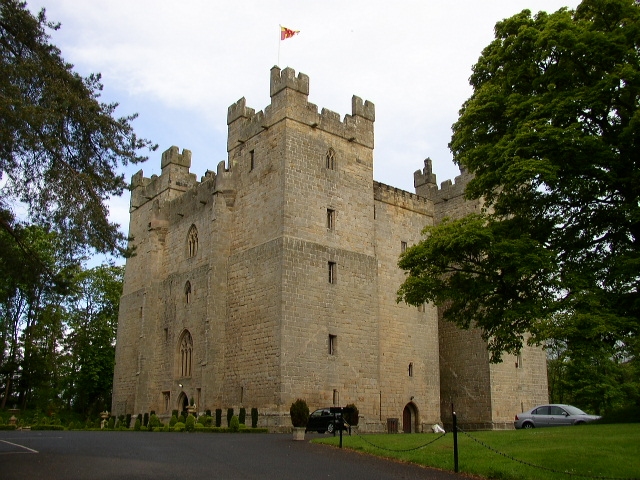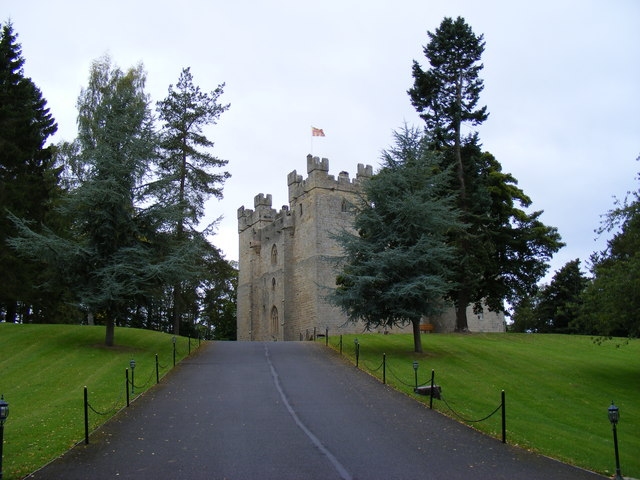
Built in 1350, during the reign of Edward III, Langley Castle, near Hexham, is not open to the public for viewing, as it is presently used as a hotel and spa. The kind proprietors allow us a quick peek of the entry way, which holds magnificent suits of armor and Great Hall, which is up a wide and winding carpeted stairway.
During the 17th century the castle and estate became the property of the Earls of Derwentwater, Viscounts Langley. James, the third Earl, and Charles, his brother, took part in the Jacobite risings of 1715 and 1745. They were subsequently executed at the Tower of London.
The property was confiscated by the Crown and later purchased by Cadwallader Bates, a local historian. The restoration of the castle to its original 14th century structure became a life's work for Bates and his wife and their efforts are evident.
A wedding was held here the evening before and the shrubs outside the entry door are still beribboned with blue silk. An appropriate ooh and ah over the suits of armor and it's up the stairs to the Great Hall. In the corner, just to the side of the door stands another suit of armor, disguising a bright red fire extinguisher. I smile, thinking that if I lived here, I'd have him holding the extinguisher – a true knight in shining armor should fire threaten.
The fireplace in the Great Hall boasts an elaborately carved mantle with a beautifully reproduced tapestry hanging over it. This room is apparently used as a lounge for guests, as there is a serving cart with pastries and fruits set off to one side. Chairs in this room are also intricately carved, bringing thrones to mind.
The crowning grace, though, is a window seat that must be climbed up into by several stairs. Plump velvet cushions and brocade hangings, a wonderful view of the grounds. I could, quite cozily, daydream away hours here. I remind myself though, that this castle is not open to the public, and not wanting one of the stewards to seek us out and invite us to leave, we thump back down the stairs and thank them for their kindness in allowing us a look around.
Leaving Langley and Hadrian's Wall country behind, we head south on the A686, snacking from our punnet of sweet juicy strawberries as we travel along a high winding road through the Pennine range. The scenery is as breathtakingly and heartbreakingly beautiful as it was on the trek to Brough. At Melmerby Fell we pull off into the car park of a pub for a panoramic view, looking west toward the Lake District, which we will be visiting later in the day. But first there is a stone circle near Keswick to explore.

Langley Castle is a restored medieval tower house, now operated as a hotel, situated in the village of Langley in the valley of the River South Tyne three miles south of Haydon Bridge, Northumberland, England.
It was built in the middle of the 14th century by Sir Thomas de Lucy as a great H-shaped tower of four stories. Before this the site was the seat of the Barons of Tynedale in the 12th century, from whom descend the Tyndall family. It was attacked and severely damaged in 1405 by the forces of Henry IV in the campaign against the Percys and Archbishop Scrope. It remained as a ruin until it was bought and restored by a local historian, Cadwallader Bates, in 1882.
Read more about Langley Castle at Wikipedia.